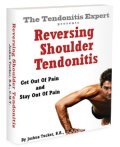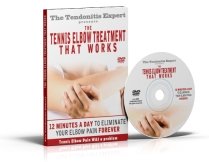Tendinosis, arm locked up, minimal elbow range of motion
by Stephen
(Brisbane, Queensland, Australia)
Hi Joshua,
In June 2016 I tore the Supraspinatus tendon in my shoulder. Then on 09 August 2016 I awoke to find that all the muscles in my right arm were locked up. Moreover, I could not straighten my elbow. Following this was quite severe pain and swelling of my elbow, forearm, wrist and hand.
Since that time the swelling did reduce after I applied an ice pack to the areas 3 times a day for 10 days.
However, significant swelling has returned which aside from the pain, restricts my wrist and hand movements. Furthermore, I have been unable to fully straighten my right arm to 180 degrees and the range of motion that my right arm has is approx 170 - 90 degrees. This has been the situation since my arm locked up on 09 August 2016.
The doctor sent me for blood tests and an ultrasound scan. The blood test were all good. However, the ultrasound revealed Common extensor tendinosis with early calcific change of the deep fibres (lateral epicondylitis). Olecranon bursitis/bursal effusion.
The bursitis has reduced, however, the section of arm immediately above the elbow near the triceps and the top area of the forearm are the areas that are the most swollen and causing the majority of the pain.
As the biceps, triceps and common flexor tendons are normal and no discrete tear seen, I am hoping that when the swelling at the back of the elbow near the triceps and forearm is gone I will be able to once again be able to straighten my arm to 180 degrees and achieve an improved range of motion.
I would very much appreciate your thoughts with respect to my present situation.
Regards,
Stephen
----
Joshua Answers:
Hi Stephen.
My questions:
1. Did you have any arm/elbow symptoms before the supraspinatus tear?
2. What caused the supraspinatus tear?
3. What did the doctors do/suggest about the supraspinatus tear?
4. Are you sure it's a supraspinatus tear? Did they do an MRI or something?
5. The doctors saw a bursal effusion (at the elbow?), meaning, it was leaking fluid, and they suggested what exactly? They didn't think the bursa leaking fluid was a problem? If not, why not?
6. How much swelling in the arm? A little, a lot?
7. Enough swelling to limit the elbow joint from moving?? That would
8. Did the doctors forget about the supraspinatus as they were looking for the cause of your elbow etc symptoms?
9. Did you have surgery to repair the supraspinatus?
My thoughts:
1. If you tore the supraspinatus, it makes sense that that would trigger a ton of Process Of Inflammation, which can cause swelling/fluid build up.
It makes sense that fluid could, due to gravity etc, move down into the arm.
2. A supraspinatus tear, and elbow bursitis, etc, tells me a few things, like that you have all the elements of Tendonitis in play.
See: What Is Tendonitis?
See: Pain Causing Dynamic
3. Part of that dynamic is too-tight muscle and connective tissue.
When a muscle is too tight, it can't work correctly, and thus tears.
And/or, your muscle was too tight for too long, and the constant tension on the tendon (plus other factors) kept it too taut, it got Tendonosis and degraded until it lost enough structural integrity to tear.
4. Part of that (both parts of #3) is that ALL the muscles of the shoulder girdle are too tight. So they're all constantly working too hard, are all too tight, are compressing the joint, are pulling on all surrounding connective tissue (like what connects to the elbow and lower arm).
And in that scenario, the muscles on the top get all the attention (but are the victims, not the perpetrators).
I suggest you get started with the Reversing Shoulder Tendonitis program.
It will help out your shoulder, and if you're clever you can use it on your arm/elbow as well.
Answer the top 9 questions, and we'll go from there.
----------------------
Please reply using the comment link below. Do not submit a new submission to answer/reply, it's too hard for me to find where it's supposed to go.
And, comments have a 3,000 character limit so you may have to comment twice.
-----------------------

Joshua Tucker, B.A., C.M.T.
The Tendonitis Expert
www.TendonitisExpert.com
| |
| Share Your Story |
Comments for Tendinosis, arm locked up, minimal elbow range of motion
|
||
|
||




